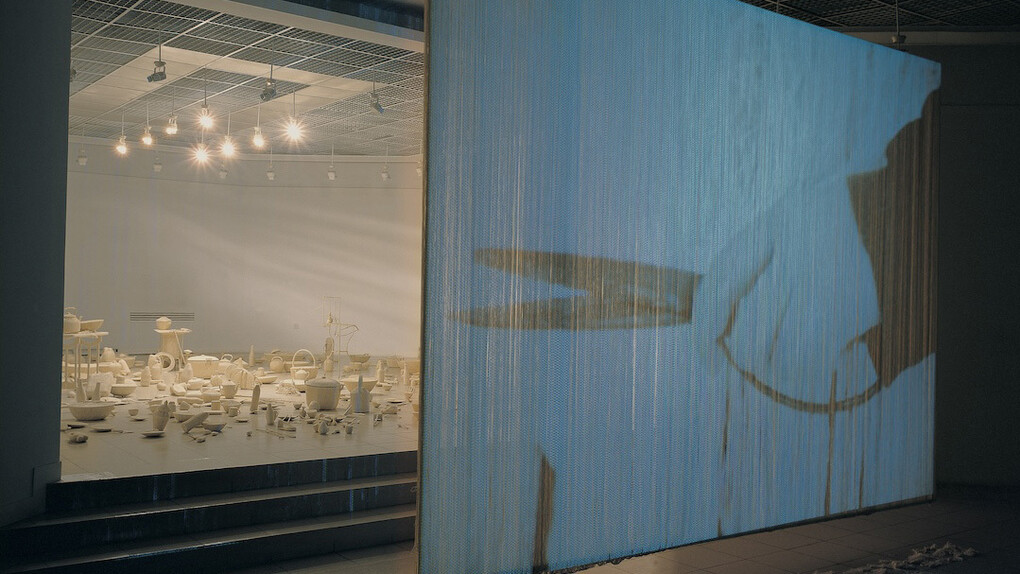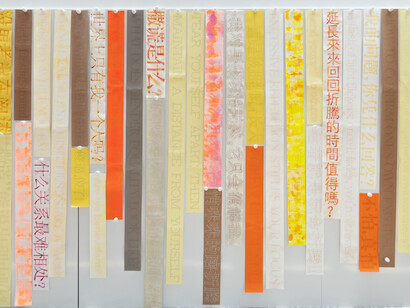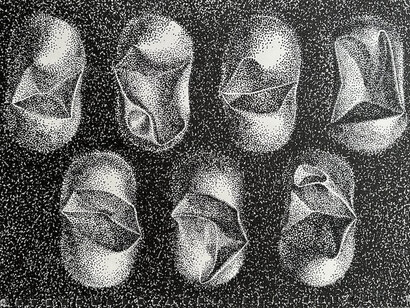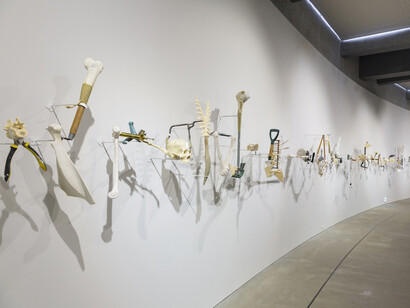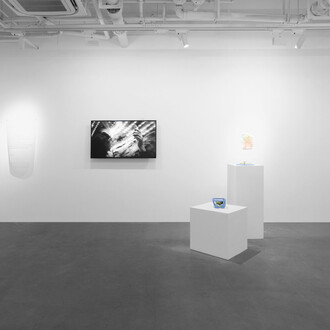From September 30, 2025, to January 4, 2026, the Power Station of Art (PSA), Shanghai, presents Lin Tianmiao: there’s no fun in it!, a major solo exhibition by one of the most important contemporary artists. This is Lin Tianmiao’s largest research-based retrospective to date, organized around a series of keywords relating to the body and everyday objects. More than 40 representative works from different periods—drawn from major museums and private collections in China and abroad—are brought together, retracing and re-staging over thirty years of her artistic career. This exhibition marks the ninth installment in PSA’s landmark research project, the “PSA Collection Series” (initiated in 2015), and is curated by Dr. Pi Li, Artistic Director of Tai Kwun Contemporary, Hong Kong.
The title There’s no fun in it! is taken from Lin’s 1997 work of the same name, created during the period following her return to Beijing after nearly a decade in New York. The work consists of a monumental 2.5-meter-diameter sphere wrapped in cotton thread, where its trailing thread extends to an embroidery hoop, upon which is stitched the satirical phrase 没什么好玩的 (There’s no fun in it!). Silent yet forceful, the piece articulates both the artist’s confrontation with unspeakable daily realities and the complex entanglement between art and life that runs throughout her practice.
Since the 1990s, Lin Tianmiao has distinguished herself as one of the first Chinese artists to articulate a consciousness of gender within contemporary art. Beginning with her own body and image, she has continually experimented with new materials and modes of expression, embarking on a sustained exploration of lived experience. This exhibition unfolds along two thematic axes—“Body” and “Everyday Objects”—to present a panoramic view of Lin’s artistic career. The “Body” constitutes the core of her inward perception and self-reflection. Beginning with her early engagements with self-image, the exhibition comprehensively presents her reflections and expressions on gender, family, motherhood, aging, and illness. In her practice, the body is not merely an artistic medium but the very locus of profound self-examination. “Everyday Objects,” by contrast, function as Lin’s vehicles for observing and responding to the external world. From domestic utensils to colloquial idioms embedded with cultural memory, these objects at once condense the texture of daily life and form the basis for her artistic transformations. Under her hand, they are dismantled and recomposed into hybrid, theatrical assemblages. Such reconfigurations not only disrupt the objects’ original functions but also reconstitute them as vessels of memory and affect.
In her early practice, Lin frequently employed pliant materials and methods of wrapping and stitching to weave together female subjectivity as both individual experience and collective memory. Braiding (1998), a monumental self-portrait constructed from countless threads, dissolves representational specificity, leaving only the most basic outlines of human corporeality. Bound and unbound (1997), in which household objects are tightly wrapped in cotton thread while scissors sever threads on a nearby screen, speaks simultaneously to her childhood memories as a daughter and her lived reality as a mother. Works such as Loss and gain (2014) and Head statues (2013) splice bones with discarded tools and household items, stripping them of their original functions and disrupting familiar orders of daily life. More recent works—including i-mpression (2024–25) and Each drop, each dot (2021–22)—were created during her confrontation with a second cancer diagnosis. These works draw on private emotion to reveal how art became a means to resist despair and to counter the physical and psychological toll of illness.
A highlight of the exhibition is the newly commissioned installation Little things (2025). Conceived through the lens of “conceptual architecture,” the 350-square-meter installation stages nearly one hundred flesh-toned mechanical devices ceaselessly moving and colliding within three geometrically shaped pools. Surveillance cameras capture their movements and project the images onto surrounding surfaces. The installation orchestrates multiple layers of vision: the organic mechanical units, the red overhead structure, and the mediated camera feeds. Together, these elements evoke the imagery of blood vessels and cells within the body while also recalling the chaotic flows of traffic and crowds in the contemporary metropolis. Internal corporeal space and external urban space collapse into one another, situating the viewer in an omniscient “god’s-eye view.” In this framework, the pools and cameras signify systems of control, while the erratic movements of the devices suggest disorder and loss of control. The tension between regulation and entropy generates a mute contradiction, reflecting contemporary society’s anxieties toward technological acceleration and radical transformation.
As a focused case study of Lin Tianmiao’s practice, There’s no fun in it! highlights the unique strength of her work, poised between softness and resilience. The exhibition invites viewers to reconsider the fraught entanglements of body and everyday life. More than a re-presentation of confusion and fear, it also gestures toward pathways of renewal and hope, positioning art as a vital means of rediscovering meaning and strength amid the complexities of our era.
Director of PSA Gong Yan remarks: “There’s no fun in it! is both the exhibition’s title and the artist’s declaration. Over more than three decades of practice, Lin Tianmiao has begun from the hand, weaving touch into a visual and psychological language. With acute sensitivity, curiosity, and openness, she traverses cultural boundaries and taboos, as well as the limitations of body and gender. Her new works demonstrate an artist reborn—through technology, fantasy, and absurdity.”
The artist Lin Tianmiao states: “Bodily sensation is often the most reliable. It is not only the source of perception but also the material and medium of creation. In different social contexts and moments in time, the body’s understanding of and response to the external world constantly shifts, giving rise to layered forms of expression. As viewers will see in this exhibition, my creative process often begins with an inward gaze at the body, then extends outward through expression and interaction, ultimately generating a live site that surpasses the body’s own control.”
Curator Pi Li observes: “Lin Tianmiao’s early practice centered on cotton thread and the act of wrapping, through which she reconstituted familiar everyday objects. These works required immense physical labor, driven by an almost obsessive pursuit of visual intensity. In stark contrast to the cynicism, consumerism, and hedonism of the era, Lin’s work retained a distinctive force. Across her decades-long career, she has persistently experimented with new materials and creative vocabularies. From her own vantage point, she has delicately captured life’s manifold experiences—whether the joy of giving life or the helplessness of confronting illness and aging. Her art is not only an expression of individual experience but also a reflection on the complex emotional conditions of contemporary society. Today, this case study and retrospective of Lin Tianmiao’s practice is of unique importance for understanding both the history of Chinese contemporary art and the realities of contemporary society.”
